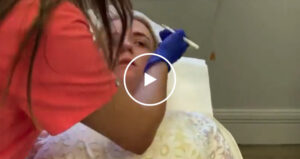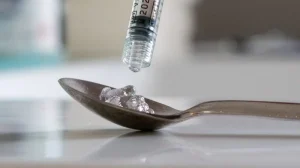Botox might make you think of smooth skin, but Botox wasn’t originally developed as a cosmetic treatment. Read on to discover the common concerns Botox treats.
Think of Botox, and the immediate thought is of the fresh, youthful skin of certain celebrities – but Botox wasn’t originally developed as a cosmetic treatment. It’s a naturally occurring protein produced by certain species of bacterium, and, when administered, it blocks the neurotransmitter acetylcholine from being released from your nerve endings. This leaves your muscles without instruction on whether to contract, causing temporary paralysis. That may sound uncomfortable, but, when used medically, only the tiniest microscopic quantity of the active ingredient is used, and Botox’s muscular effects can be used to relieve a variety of cumbersome conditions – so read on to learn if Botox might be right for you.
A Brief History of Botox
When treating lines and wrinkles, Botox has both a preventative and a curative effect – with muscle contractions relaxed, skin appears dramatically smoother, and new wrinkles are prevented from forming while Botox is present in the skin. This duality makes it one of the most effective anti-ageing treatments around – in fact, a 2015 study from JAMA Facial Plastic Surgery journal found that, additionally, Botox may improve skin elasticity and pliability for up to four months after injection.
But Botox’s miraculous effect on our muscles makes it useful for more than just anti-ageing. In fact, the first of Botox’s many medical applications to be discovered had nothing to do with ageing at all. Botox was first found to have medical uses in the mid-twentieth century, when eye doctor Dr. Alan B. Scott found that injecting microscopic quantities of botulism toxin type A (there are seven different known kinds) in monkeys could correct crossed eyes. And once further research uncovered Botox’s ability to provide relief from face, body and even vocal spasms, Botox became the subject of great medical interest.
In fact, Botox’s enormous potential as an anti-ageing treatment only came to light in the 90s, after doctors using Botox to treat blepharospasm noticed an unexpected side-effect of the treatment – the treatment was causing wrinkles to disappear. Studies into cosmetic use found Botox to be both safe and effective – though early cosmetic use of the substance could be somewhat “trial and error”, and accounts for many of the lingering misperceptions about Botox to this day.
But our knowledge of Botox and how to use it has come on in leaps and bounds, and we can now use Botox subtly, skillfully and effectively, resulting in a youthful yet natural appearance – and as the public becomes more educated about aesthetics, injectables such as Botox are fast replacing invasive surgeries as most people’s anti-ageing treatment of choice. But atThe WY Skin Clinic, we don’t just use Botox for anti-ageing – our experienced doctor, Dr. Saira Vasdev, can administer Botox for a number of other, irksome conditions.
The Curative Powers of Botox
If you’re self-conscious about underarm sweat so never remove your jacket or always go for dark colours. Botox is the treatment for you – it’s a safe and effective treatment for hyperhidrosis. By blocking signals from the brain to your sweat glands, Botox reduces sweating in affected areas, and is particularly useful if your excess sweating is limited to a few, smaller areas (such as the armpits or hands Botox isn’t permanent, so treatment will need to be repeated once the effects have worn off (typically 6-9 months), but it’s a highly effective non-invasive solution which will change your life.
Likewise, if your teeth-grinding (Bruxism) is causing you headaches or ear pain, preventing you from sleeping soundly or beginning to give you dental problems, Botox can provide targeted relief. Once again signals are blocked between the brain and muscles which cause clenching and grinding.
As research into Botox’s medical properties continues, it is likely to be approved for more conditions. As well as the benefits of its muscle-relaxant properties, Botox has been shown to provide pain relief in a number of conditions, including lower back pain, bladder pain, mytofascial pain, neuropathic pain and cervical dystonia. Botox also provides significant relief for sufferers of chronic migraine, and though the treatment is currently only approved for use for this purpose at a few specialist clinics, with further research, it should become more widely available.
Our Consultancy Process
Whether you’re suffering from bruxism or hyperhidrosis, or you simply wish to easily and dramatically improve the appearance of your skin, at The WY Skin Clinic you are safe in the certainty that your Botox is being administered by a highly trained, qualified and experienced doctor – Dr. Saira. We firmly believe that Botox should only be injected by a specialist doctor who has your best interests at heart – so your treatment journey begins with an in-depth consultation. Dr. Saira will thoroughly assess your medical history before meeting with you in person to discuss your needs and concerns. As part of your consultation, Dr Saira will perform an in-depth skin analysis using our state-of-the-art Visia machine, allowing her to put together a personalised treatment plan. Your Botox will only ever be administered by Dr. Saira.
If you’d like to discuss how Botox could benefit you, get in touch by emailing info@wyskinclinic.com, or call us on 0207 4863849, and we’ll be happy to talk through your needs.






